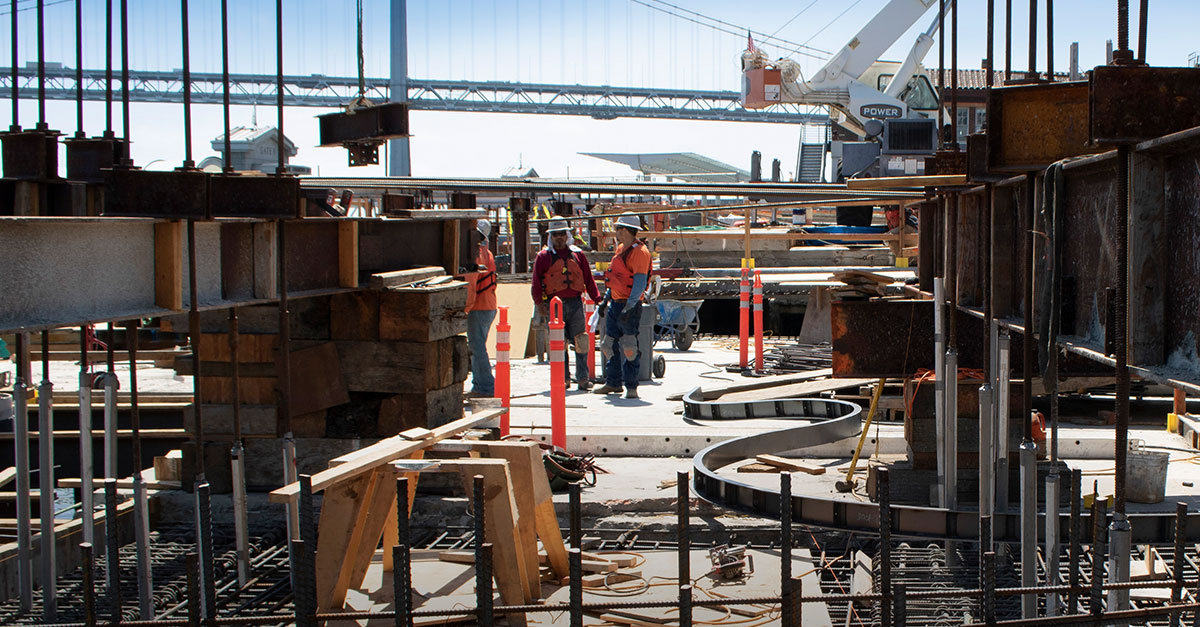It’s Time to Adopt Digital Workflows in Construction

Editor’s note: Fieldwire is proud to feature construction expert Jim Rogers on our blog. Jim has decades of experience in construction management and is an instructor for LinkedIn Learning — an online library of video courses taught by industry experts from across the globe. LinkedIn Learning is a great source for construction management education and content, and it’s included if you have a LinkedIn Premium account.
Jim enjoyed learning about Fieldwire so much that he created a LinkedIn Learning course on how to use Fieldwire to manage construction drawings and processes. He then created this blog post for our readers who are eager to learn more about digitizing paper-based processes.
The construction industry is now, more than ever, going through the process of adopting technology and converting to digital solutions. However, we are one of the last large industries to really embrace this digital revolution, and this transformation can be unfamiliar to many in the industry, particularly those on the operations side of a construction project. As the industry has progressed, we have certainly seen a conversion from our old paper-based processes over to processes that favor digitization and utilize electronic formats.
That transformation from paper to digital is a critical step in improving the construction industry, but it is just a first step, and it’s a step that we need to move beyond, right now. In order to really improve and move the industry forward, we need to embrace this digital revolution and identify areas where we can move past simple digitization of our old paper-based workflows, and instead embrace the utilization of digital workflows to completely replace some of the old industry standard processes that are simply inefficient given the options that are now readily available.
Digitizing paper-based processes vs. Digitizing entire workflows
There is a substantial difference between simply digitizing a paper-based workflow versus completely rethinking a process to leverage the advantages that can be realized with a true digital workflow. Digitizing a paper process is fairly simple, and the resulting process will remain familiar to most people involved because the process will not substantially change. You are simply changing the medium being used. Re-examining a process from the viewpoint of a true digital workflow is more complicated, and the resulting process may be foreign and unfamiliar to many of the people who will utilize it. Rather than keeping the old workflow and just changing from paper to digital, look for opportunities to create an entirely new workflow that is more efficient and more effective by leveraging technology to simplify the process.
Example: Digitizing the distribution of construction drawings
One of the basic workflows common to any construction process is the distribution of construction drawings as a project progresses and revisions are issued.
The paper process was simple: create a Transmittal Letter to capture what is being sent, to whom, and when, attach the drawings and send them on. Unfortunately, the paper process was, and still is, largely ineffective at putting the latest revisions into the hands of the people that are actually performing the work. Yes, it captured information so that when something was built wrong, the General Contractor could document that they sent the revisions before the work was started. That helps shift the risk from the GC for the direct cost of re-work, but it’s still re-work. It still incurs cost and delays the schedule. The problem is that the process focusses on capturing information while doing very little to ensure that those drawings end up in the hands of the individuals who really need them.
Digitizing that process is not much of an improvement. In a digital version of the process, the General Contractor receives an electronic version of the drawings, and simply emails it to the Subcontractors. It’s digital, it eliminates paper, and the email effectively replaces the transmittal form since it contains all the same information, but it’s still largely ineffective, ignoring the last step of getting the plans to the field.
At issue in this process is the need for an effective way to get the latest construction drawings in the hands of the people that need them. There are many people that need the drawings, including people that manage the work, price the work, perform the work, and inspect the work. All of these people need the drawings as soon as possible. And the process must include a way to document who was sent the drawings, and when. The needs are the same as they always have been; however, we now have the tools available to allow us to fill these needs in a completely new manner. These are tools that did not exist 10 years ago. The industry has only recently had easy access to the hardware, software, and distribution infrastructure needed to create a truly better solution to this problem, and that solution requires the wholesale adoption of a truly digital workflow.
Digitizing workflows using Fieldwire
The solution to this process is that instead of distributing drawings to everyone that needs them, everyone works from a single shared set of drawings. A set that lives in the cloud and can be accessed by everyone simultaneously on a computer, a tablet, or even a smartphone.
The digital workflow solution to the distribution of construction drawings using Fieldwire is extremely simple:
- The General Contractor receives a digital drawing file (original or revisions) in the PDF format from the Owner
- The General Contractor uploads the PDF file to Fieldwire

If the proper workflow has been implemented on the project, that’s actually the entire process. There isn’t anything else to do because the software does it automatically:
- Each sheet is numbered/labeled
- The information on who uploaded them and when is automatically captured
- The software detects version information and identifies the drawings, automatically slip sheeting in any revisions
- Every affected person is automatically sent a notification
- Every individual involved with the project has immediate access to the latest drawings by computer, tablet, or smartphone even when they’re not connected to the internet
The key here is to realize and accept that this is a new process, rather than looking at the software as a tool for viewing the drawings. Yes, this is different. Yes, it can be uncomfortable. Its uncomfortable because its new and different, and because it is such a dramatic improvement over the old workflow and process that it’s difficult to grasp it as being equivalent, let alone superior; however, an objective review of the problem and solution reveals that this new digital workflow is actually far superior to the old workflow. It’s also a workflow that can have a substantial positive impact on the productivity of the construction industry.

 Jim Rogers •
Jim Rogers • 
















